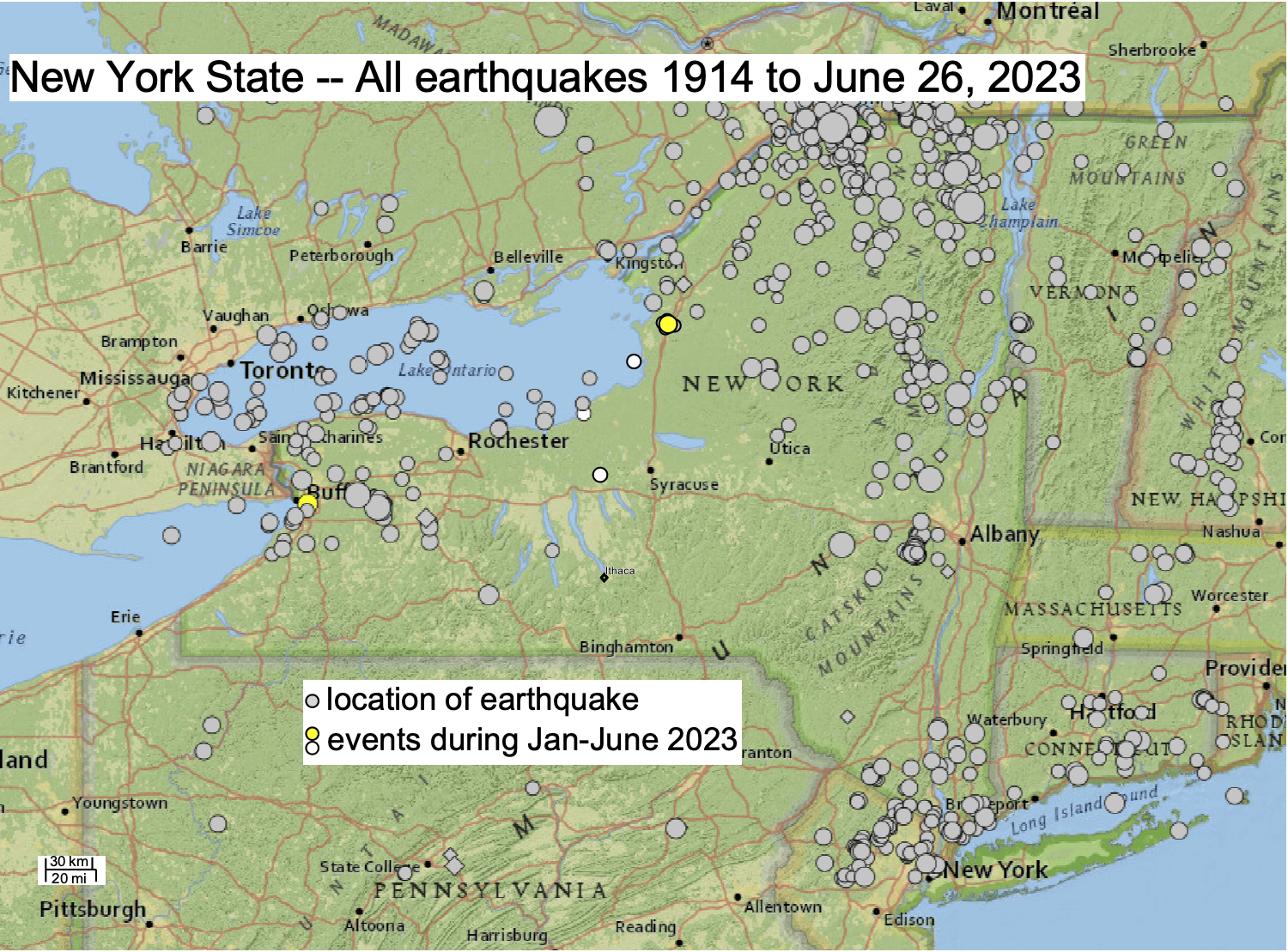Earthquake hazards in the New York City area Map depicting the extent of the Ramapo. Map showing Quaternary faults in the western US Note that most faults that can affect residents are. WEB As in most other areas east of the Rocky Mountains the best guide to earthquake hazard in the northeastern US Is probably the locations of the past. WEB Buffalo Sits Near Pretty Significant Fault Line A magnitude 38 earthquake that hit the. WEB The Clarendon-Linden fault system is a major series of fault lines in western New York state in the United States..
Earthquake hazards in the New York City area Map depicting the extent of the Ramapo. Map showing Quaternary faults in the western US Note that most faults that can affect residents are. WEB As in most other areas east of the Rocky Mountains the best guide to earthquake hazard in the northeastern US Is probably the locations of the past. WEB Buffalo Sits Near Pretty Significant Fault Line A magnitude 38 earthquake that hit the. WEB The Clarendon-Linden fault system is a major series of fault lines in western New York state in the United States..
**Earthquake Hazards in New York Tri-State Area** Recent studies have shed light on the earthquake hazards facing the New York metropolitan area. Here's what we know: **Past Earthquakes Provide Clues** Historical records show that the Northeast has experienced earthquakes in the past, including: * A magnitude 3.8 earthquake in Buffalo in 1988 * A magnitude 4.0 earthquake in New Jersey in 2018 **Fault Lines in the Region** The Ramapo Fault Zone, located in Rockland County, New York and northern New Jersey, is a potential source of earthquakes in the area. **Quaternary Faults in Western New York** Quaternary faults, those that have been active in the past 2.6 million years, have been identified in western New York, including the Clarendon-Linden fault system. **Assessing Hazard** While major earthquakes are rare in the Northeast, it is important to understand the potential risks. The location and magnitude of past earthquakes provide valuable information for assessing earthquake hazard. **Prepare for the Unexpected** Residents should be aware of the earthquake hazards in their area and take steps to prepare: * Have an emergency plan in place * Secure heavy objects * Know where to shelter during an earthquake * Stay informed about earthquake preparedness By understanding the earthquake hazards and taking precautions, communities can mitigate the potential risks and protect themselves from harm.
**Major Earthquakes Rock San Francisco Bay Area** **San Francisco, CA** - The San Francisco Bay Area has experienced a series of strong earthquakes in recent times, highlighting the region's seismic vulnerability. **Historical Earthquakes** Since 1836, the Bay Area has witnessed five major earthquakes with a magnitude of 6.75 or higher. These have caused significant damage and loss of life. **Recent Earthquakes** In the past year, four powerful earthquakes have shaken the Bay Area: * **April 2022:** A magnitude 6.4 earthquake struck off the coast of Eureka, causing minor damage. * **April 18, 1906:** The Great San Francisco Earthquake, with a magnitude of 7.8 to 8.3, was the most destructive in the region's history, leveling much of the city and claiming approximately 3,000 lives. * **October 1989:** The Loma Prieta earthquake, with a magnitude of 6.9, caused significant damage to bridges and buildings in the Bay Area and Oakland. * **August 2014:** A magnitude 6.0 earthquake near Napa caused extensive damage to wineries and homes and shook the Bay Area. **Population Growth** It is important to note that the Bay Area's population has grown significantly since the 1906 earthquake. Nearly half a million people lived in San Francisco when the Great Earthquake struck, while today the region is home to over 7 million people. This population growth increases the potential impact of future earthquakes. **Seismic Preparedness** Given the Bay Area's earthquake history and population density, it is crucial for residents to be prepared for future events. This includes developing an earthquake plan, building an emergency kit, and securing heavy items in your home. Residents should also stay informed about seismic activity and evacuation routes.
**Earthquake Strikes Buffalo, New York** **February 6, 2023** A 3.8 magnitude earthquake shook the Buffalo, New York area this morning at approximately 6:15 AM PST. According to the U.S. Geological Survey (USGS), the epicenter of the quake was located east of Buffalo in the suburb of West Seneca. The USGS initially reported a magnitude of 3.8, but has since revised it to 3.0. Residents reported feeling the earthquake with varying degrees of intensity. Some described the shaking as "mild," while others reported feeling a "jolt." No injuries or damage have been reported at this time. However, authorities are urging residents to be aware of potential aftershocks and to take precautions. According to the USGS, aftershocks are to be expected in the coming days or weeks. The agency recommends that residents secure loose objects, stay away from windows, and have an evacuation plan in place in case of further shaking. The earthquake has not affected any major infrastructure or utilities. Power, water, and communication services are all functioning normally. Residents are encouraged to stay informed and follow the latest updates from the USGS and local authorities.


Komentar